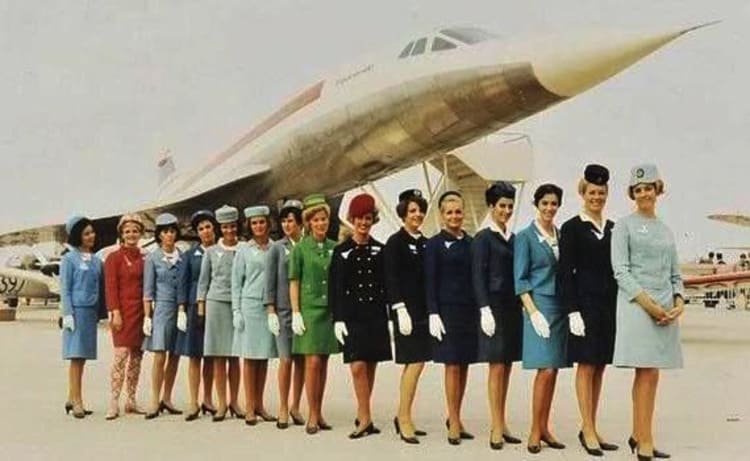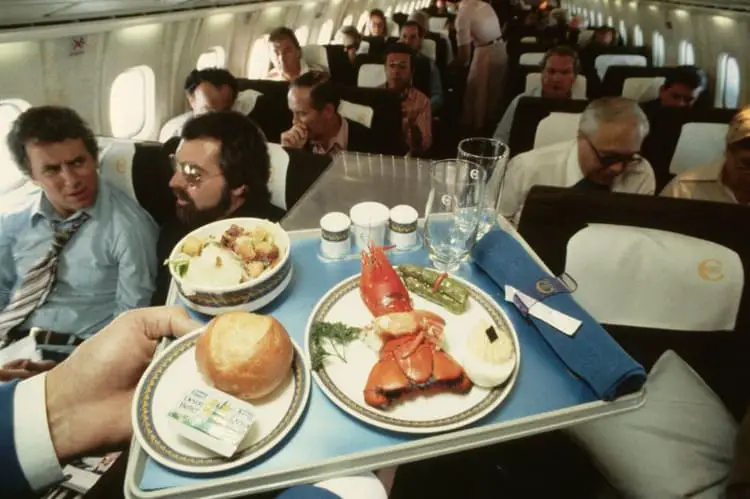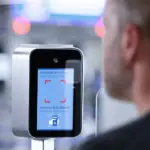For flight attendants, working on the legendary Concorde was more than just a job—it was an experience unlike any other.
The supersonic jet, which could fly at twice the speed of sound (Mach 2), carried an air of prestige and exclusivity.
From celebrity passengers to the unique challenges of working in a cramped, high-speed environment, being part of the Concorde crew was both exhilarating and demanding.
Let’s take a behind-the-scenes look at what it was like to work on one of the most iconic aircraft in history.
The Most Exclusive Crew in the Sky

Not just anyone could work on Concorde.
The crews who served on the aircraft were handpicked and had to undergo specialized training.
It was considered one of the most prestigious positions in aviation.
Those who worked on board described it as a once-in-a-lifetime honor. It wasn’t just another flight—it was a piece of aviation history in motion.
First-Class Service at 60,000 Feet

Concorde wasn’t just about speed—it was about luxury at supersonic levels. Passengers paid a premium for the experience, and the service had to match the price tag.
- The cabin was intimate, with around 100 seats, allowing for highly personalized service.
- Fine china, silver cutlery, and crisp white linens gave the meal service a restaurant-quality feel.
- Passengers expected seamless, impeccable service. With just over three hours to cross the Atlantic, there was zero room for delays or errors—every second counted.
The Fastest Five-Star Meal Ever Served

Airlines spared no expense in crafting first-class meals, designed by renowned chefs and paired with the finest wines.
- Menus featured lobster, caviar, filet mignon, smoked salmon, and truffle dishes, served on fine china with silver cutlery.
- Expensive champagne flowed freely, often Dom Pérignon or Krug.
- The meal service had to be incredibly fast—a transatlantic flight lasted just over three hours, giving the crew a shorter window than any other luxury airline service.
- There were no traditional meal trays. Instead, flight attendants hand-delivered plates, ensuring a restaurant-style presentation.

VIP Passengers: Rockstars, Royalty, and Billionaires

Working on Concorde meant rubbing shoulders with the world’s elite.
Celebrities, royalty, and business moguls were regular passengers.
- Jon Bon Jovi, Mick Jagger, and Prince were frequent flyers.
- Queen Elizabeth II and Prince Philip once flew on Concorde.
- Business executives would fly to New York for a morning meeting and return to London the same day.
Some passengers loved to chat, take pictures, and enjoy the experience, while others preferred to work quietly.
Flight attendants had to read the room and adjust their service style accordingly.
Unique Challenges of Working on Concorde
While the job was glamorous, it also came with its fair share of challenges.
1. Supersonic Speed, Supersonic Service
At Mach 2, the flight from London to New York took just 3.5 hours—less than half the time of a regular flight.
This meant that flight attendants had to serve meals, provide exceptional customer service, and manage the cabin—all at lightning speed.
2. Tight Quarters

Unlike modern wide-body jets, Concorde’s cabin was narrow and cramped.
- Overhead bin space was minimal—passengers’ larger bags had to be stored in a dedicated wardrobe.
- The galley was small, so crew members had to prepare and serve gourmet meals in a fraction of the space available on other aircraft.
3. Strict Weight Limits = Crew Bags Came Last
If the aircraft needed to offload weight, guess whose bags were left behind first? The crew’s.
Flight attendants learned to pack light and prepare for surprises.
Weight limits were strict. If luggage had to be dropped? Guess whose bags got axed first? Ours!
4. Working on an Incline
Because Concorde’s nose was tilted upward during flight, flight attendants had to work at an angle.
This made walking through the cabin feel like climbing a slight hill, adding an extra challenge to an already demanding job.
Balancing champagne trays while climbing uphill? Just another day at work
Beyond New York: Million-Dollar World Tours
While New York-London was Concorde’s signature route, it also hosted luxury global tours for the ultra-wealthy.
Around-the-World Trips for the Elite
- Some passengers paid up to $1 million per seat for six-week global itineraries.
- Destinations included Sydney, Hong Kong, Cape Town, Las Vegas, and Paris.
- These flights allowed crew members to bond with passengers, making them some of the most memorable assignments.
Short “Experience Flights” for Everyday Passengers
For those who couldn’t afford a transatlantic ticket, airlines offered 90-minute supersonic joyrides over the Bay of Biscay.
- Champagne flowed just like on the regular routes.
- Passengers visited the cockpit to witness the magic up close.
- Everyone received a certificate proving they had flown on Concorde—a perfect bucket-list moment.

The End of an Era: Concorde’s Final Chapter

Sadly, Concorde’s time in the skies came to an end.
- The tragic Air France Flight 4590 crash in 2000 cast a shadow over supersonic travel.
- The rising costs of maintenance and fuel made it financially unsustainable. Airlines focused on cost efficiency and larger, more fuel-efficient aircraft, while advancements in business technology reduced the demand for same-day transatlantic flights. With dwindling profitability and a shift in priorities, the decision was made to retire Concorde.
- Concorde’s last commercial flight was on November 26, 2003.
For those who worked on the aircraft, saying goodbye was heartbreaking.
The memories of supersonic speeds, VIP passengers, and the thrill of flying at the edge of space remain unforgettable.
Will Supersonic Travel Ever Return?
With companies like Boom Supersonic and NASA working on new supersonic aircraft, many aviation enthusiasts hope for a new era of high-speed travel.
However, today’s world is different.
- The aviation industry is more focused on sustainability than ever before.
- Technology has changed business travel—meetings that once required same-day flights to New York can now happen over video calls.
- Many experts question whether a new supersonic jet could be financially viable in today’s airline industry.
While the future of commercial supersonic travel remains uncertain, one fact is undeniable:
There will never be another aircraft quite like Concorde.
Final Thoughts
For the lucky few who had the chance to work at Mach 2, Concorde wasn’t just a plane—it was a time capsule of glamour, adrenaline, and humanity’s hunger to push limits.
As one attendant put it: “We didn’t just serve meals. We made history.”



